Lincoln Navigator: Glass, Frames and Mechanisms / Front Door Glass Top Run. Removal and Installation
Lincoln Navigator 2018-2025 Workshop Manual / Body and Paint / Glass, Frames and Mechanisms / Front Door Glass Top Run. Removal and Installation
Removal
NOTE: LH side shown, RH side similar.
NOTE: Removal steps in this procedure may contain installation details.
-
Remove the front door window regulator and motor.
Refer to: Front Door Window Regulator and Motor (501-11 Glass, Frames and Mechanisms, Removal and Installation).
-
Remove tape and lower the front door window glass to full down position.
-
Remove tape.
-
Lower the front door window glass to full down position.
-
Remove tape.
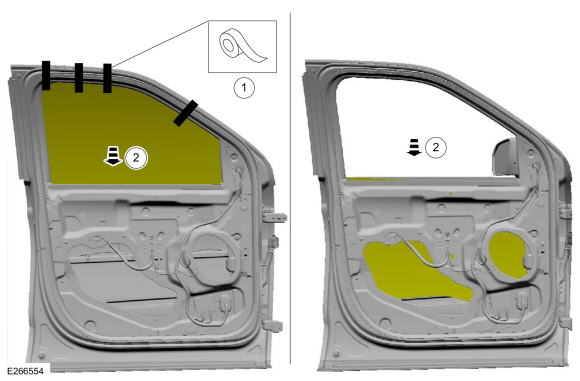 |
-
Remove the pin-type retainers and the front door upper trim.
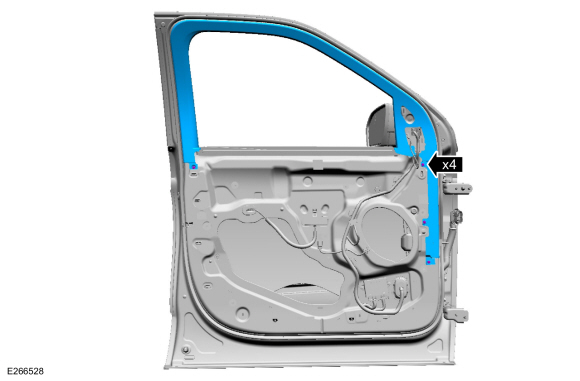 |
-
Remove the front door inner belt moulding.
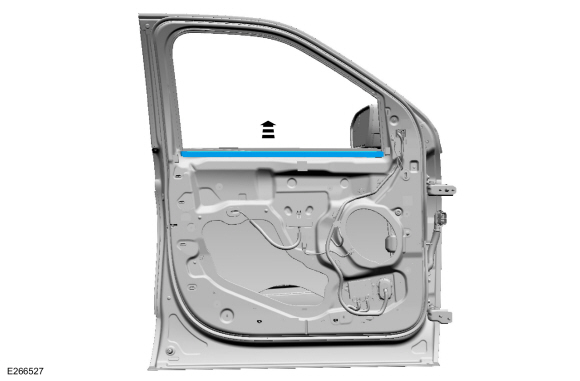 |
-
Remove the front door glass top run bolt adhesive cover.
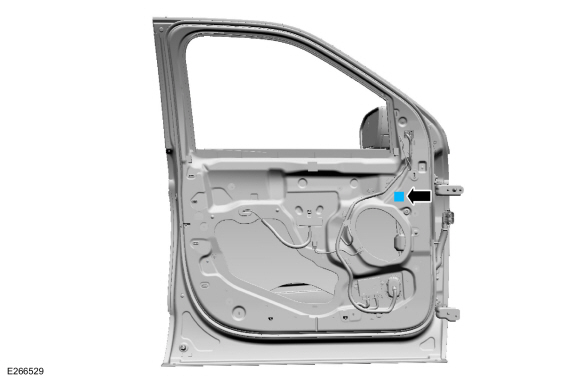 |
-
Remove the front door glass top run.
-
Remove the front door glass top run bolts.
Torque: 71 lb.in (8 Nm)
-
Release the front door glass top run from the door run channel.
-
Release the front door glass top run from the door run channel.
-
Release the front door glass top run from the door run channel.
-
Remove the front door glass top run.
-
Remove the front door glass top run bolts.
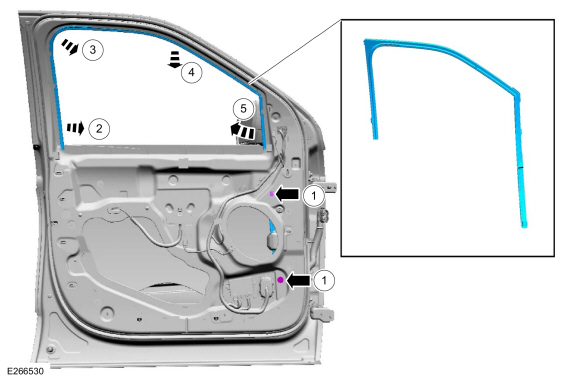 |
Installation
-
To install, reverse the removal procedure.
-
Carry out the power door window initialization.
Refer to: Power Door Window Initialization (501-11 Glass, Frames and Mechanisms, General Procedures).
 Front Door Glass Run and Bracket. Removal and Installation
Front Door Glass Run and Bracket. Removal and Installation
Removal
NOTE:
LH side shown, RH side similar.
Remove the front door latch.
Refer to: Front Door Latch (501-14 Handles, Locks, Latches and Entry Systems, Removal and Installation)...
 Front Door Window Glass. Removal and Installation
Front Door Window Glass. Removal and Installation
Removal
NOTE:
LH side shown, RH side similar.
Remove the front door glass top run.
Refer to: Front Door Glass Top Run (501-11 Glass, Frames and Mechanisms, Removal and Installation)...
Other information:
Lincoln Navigator 2018-2025 Workshop Manual: Air Conditioning (A/C) Odor Treatment. General Procedures
Inspection NOTE: There are typically 4 types of objectionable odors found in a vehicle: chemical odors environmental odors human and other interior-generated odors microbiological odors Before determining that A/C odor treatment is required, determine the source and the circumstances under which the odor occurs...
Lincoln Navigator 2018-2025 Workshop Manual: Charging System - 3.5L EcoBoost (272kW/370PS). Diagnosis and Testing
Diagnostic Trouble Code (DTC) Chart Diagnostics in this manual assume a certain skill level and knowledge of Ford-specific diagnostic practices. REFER to: Diagnostic Methods (100-00 General Information, Description and Operation). Module DTC Description Action BCM B11D9:16 Vehicle Battery: Circuit Voltage Below Threshold GO to Pinpoint Test A BCM B11D9:16..
Categories
- Manuals Home
- 4th Gen Lincoln Navigator Service Manual (2018 - 2025)
- Vehicle Dynamics Control Module (VDM). Removal and Installation
- Windshield Washer Pump. Removal and Installation
- Rear Bumper. Removal and Installation
- Front Seat. Removal and Installation
- SYNC Module [APIM]. Removal and Installation
Wheel to Hub Runout Minimization. General Procedures
Check
NOTE: Wheel-to-hub optimization is important. Clearance between the wheel and hub can be used to offset or neutralize the Road Force® or run-out of the wheel and tire assembly. For every 0.001 inch of wheel-to-hub clearance, the Road Force® can be affected between 1 and 3 pounds depending on the tire stiffness.
NOTE: The example below illustrates how the clearance between the wheel and the hub can be used to offset the high spot of radial run-out or Road Force®. Following the procedure will make sure of the best optimization.
Position the wheel and tire assembly on the vehicle so that the high spot location of radial run-out or Road Force® is at the 6 o'clock position andCopyright © 2025 www.linavigator4.com
